IGF-1 LR3 (Receptor Grade) 100mcg x 10 Vials
$300.00
IGF-1 LR3 Receptor Grade is a premium research reagent for use in cell growth studies, IGF receptors and IGF binding proteins and is more potent than rH IGF1 and media grade IGF1. (Standard IGF1-LR3.)
COA IGF-1 LR3 (Receptor Grade) 100mcg x 10 Vials Certificate
What is IGF1-LR3?
IGF1-LR3 is a modified version of insulin-like growth factor-1. The full name of the peptide is insulin-like growth factor-1 long arginine 3. All IGF-1 derivatives play prominent roles in cell division, cell proliferation, and cell-to-cell communication. Though it has similar effects, IGF-1 LR3 does not adhere to IGF binding proteins as strongly as IGF-1. This results in IGF1-LR3 remaining in the bloodstream 120 times longer than IGF-1. IGF1-LR3 gains its prolonged half-life as a result of its structural changes. The peptide is created by adding 13 amino acids to the N-terminal end of IGF-1 and by converting the glutamic acid at position 3 of IGF-1 to an arginine residue.
Key Features:
-
Enhanced Potency: IGF-1 LR3 exhibits approximately three times the potency of native IGF-1, attributed to its reduced affinity for IGF-binding proteins, allowing for increased interaction with IGF-1 receptors.
-
Extended Half-Life: The structural modifications confer a prolonged half-life of approximately 20–30 hours, facilitating sustained biological activity in experimental settings.
-
Research Applications: IGF-1 LR3 is utilized in studies focusing on cell proliferation, muscle regeneration, tissue repair, and metabolic processes.
Molecular Details:
-
Sequence: MFPAMPLSSL FVNGPRTLCG AELVDALQFV CGDRGFYFNK PTGYGSSSRR APQTGIVDEC CFRSCDLRRL EMYCAPLKPA KSA
-
Molecular Weight: Approximately 9,117.5 g/mol
-
CAS Number: 946870-92-4
Usage and Storage:
-
Reconstitution: Reconstitute each vial with bacteriostatic water for injection.
-
Storage: Store lyophilized vials at 2–8°C. Once reconstituted, the solution should be stored at 2–8°C and used within 30 days.
Important Notice:
This product is intended for laboratory research use only and is not approved for human consumption or therapeutic applications. Proper handling and storage procedures should be followed to maintain product integrity.
HPLC IGF-1 LR3 (Receptor Grade) 100mcg x 10 Vials Certificate
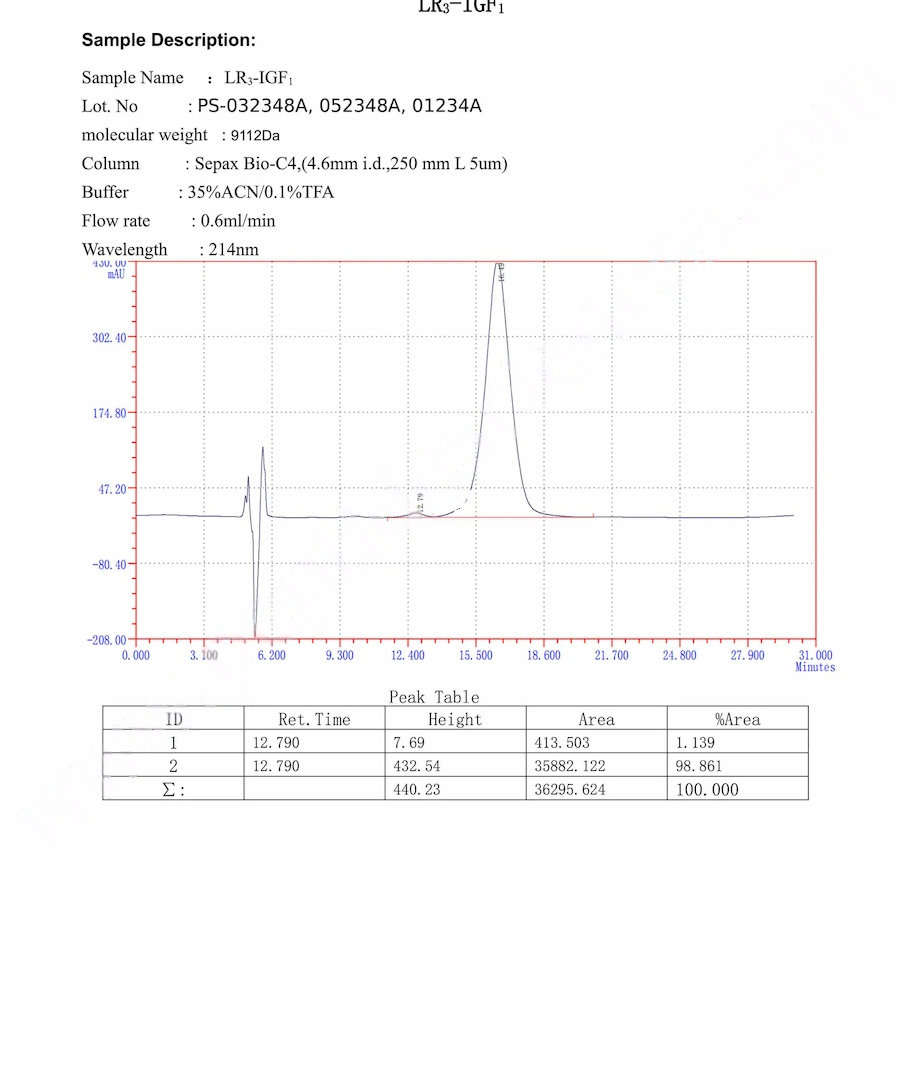
MS IGF-1 LR3 (Receptor Grade) 100mcg x 10 Vials Certificate
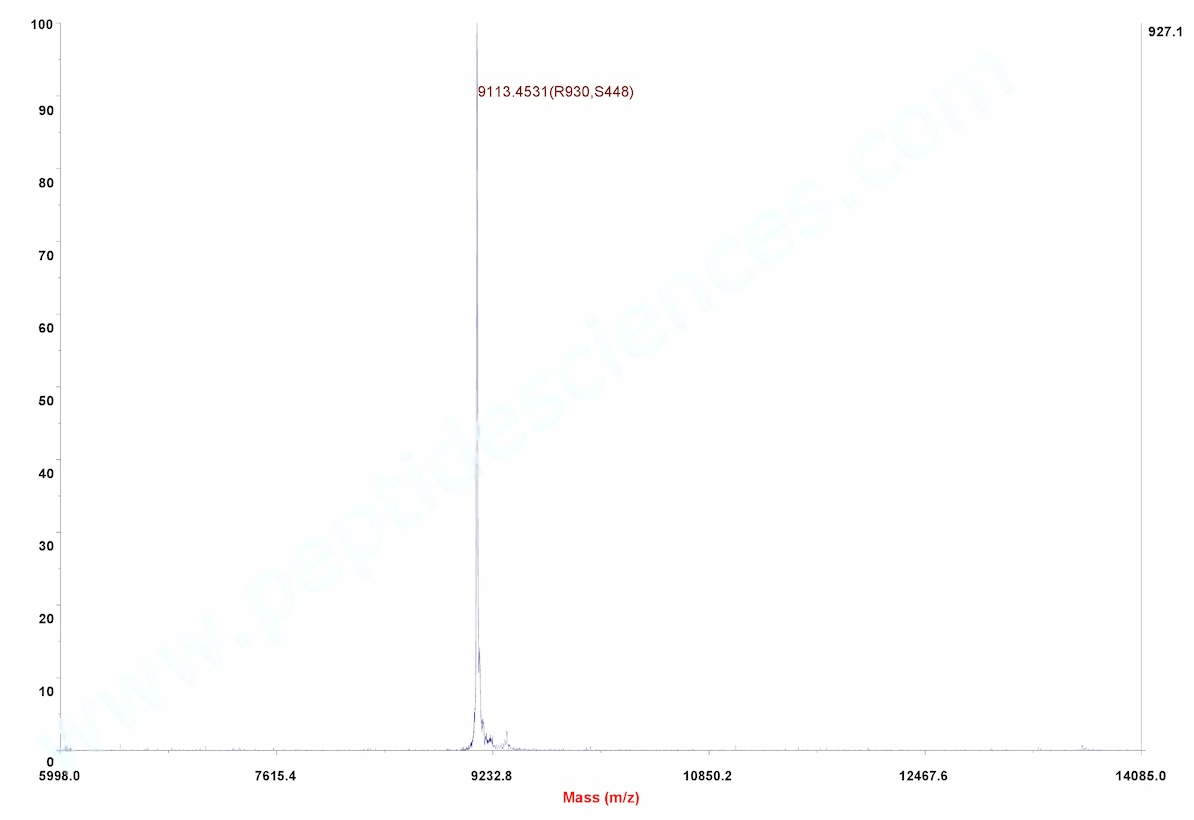
IGF1-LR3 Research
Cell Divison
Like IGF-1, IGF1-LR3 is a potent stimulus for cell division and proliferation. Its primary effects are on connective tissues like muscle and bone, but it also promotes cell division in liver, kidney, nerve, skin, lung, and blood tissues. IGF-1 is best thought of as a maturation hormone because it not only promotes cell proliferation, but differentiation as well. IGF-1 causes cells to mature, in other words, so that they can carry out their specialized functions.
Unlike IGF-1, IGF1-LR3 remains in the bloodstream for long periods of time. This property makes IGF1-LR3 a much more potent molecule. A dose of IGF1-LR3 provides approximately three times as much cell activation as a similar dose of IGF-1. Note that IGF1-LR3 and all IGF-1 derivatives do not promote cell enlargement (hypertrophy), but rather promote cell division and proliferation (hyperplasia). In the case of muscle, for instance, IGF1-LR3 does not cause muscle cells to get larger, but it does increase total numbers of muscle cells.
Fat Metabolism and Diabetes
IGF1-LR3 boosts fat metabolism in an indirect manner by binding to both the IGF-1R receptor and the insulin receptor. These actions increase glucose uptake from the blood by muscle, nerve, and liver cells. This results in an overall decrease in blood sugar levels, which then triggers adipose tissue as well as the liver to begin breaking down glycogen and triglycerides. Overall, this produces a net decrease in adipose tissue and a net energy consumption (i.e. net catabolism).
Given its role in reducing blood sugar levels, it should come as no surprise that IGF1-LR3 reduces insulin levels as well as the need for exogenous insulin in diabetes. In most cases, this translates into a 10% decrease in insulin requirements to maintain the same blood sugar levels. This fact may help scientists understand how to decrease insulin doses in individuals who have decreased insulin sensitivity and may even offer insight into preventing type 2 diabetes in the first place.
Impairs Myostatin
Myostatin (a.k.a. growth differentiation factor 8) is a muscle protein that primarily inhibits the growth and differentiation of muscle cells. While this function is important to prevent unregulated hypertrophy and ensure proper healing following injury, there are times when inhibiting myostatin could be of benefit. The ability to stop myostatin from functioning could be useful in conditions like Duchenne muscle dystrophy (DMD) or in people who suffer muscle loss during prolonged immobility. In these cases, inhibiting this natural enzyme could help to slow muscle breakdown, maintain strength, and stave off morbidity.
In mouse models of DMD, it has been found that IGF1-LR3 and other IGF-1 derivatives are capable of counteracting the negative effects of myostatin to protect muscle cells and prevent apoptosis. IGF1-LR3, thanks to its long half-life, is highly effective in counteracting myostatin and appears to work by activating a muscle protein called MyoD[ 1], [2]. MyoD is the protein normally activated by exercise (e.g. weight lifting) or tissue damage and is responsible for muscle hypertrophy.
IGF1-LR3 Longevity Research
IGF1-LR3 promotes tissue repair and maintenance throughout the body, making it a protective molecule against cell damage and the effects of aging. Research in cows and pigs indicates that IGF1-LR3 administration may be an effective solution for offsetting the effects of cellular aging. Ongoing research in mice seeks to determine if IGF1-LR3 might be useful in preventing progression of a wide range of conditions such as dementia, muscle atrophy, and kidney disease. This research reveals that IGF-1 administration can prolong life and reduce disability
Glucocorticoid Signaling
Glucocorticoids, secreted primarily by the adrenal glands, are important clinical drugs used to control pain and reduce inflammation in autoimmune diseases, neurological injury, cancer, and more. Unfortunately, glucocorticoids have a number of undesirable side effects such as muscle wasting, fat gain, and deterioration of bone density. There is some interest in using IGF1-LR3 to reduce the side effects of glucocorticoids and thus allow for more effective therapy.
IGF1-LR3 exhibits minimal to moderate side effects, low oral and excellent subcutaneous bioavailability in mice. Per kg dosage in mice does not scale to humans. IGF1-LR3 for sale at Peptide Sciences is limited to educational and scientific research only, not for human consumption. Only buy IGF1-LR3 if you are a licensed researcher.
Frequently Asked Questions: IGF-1 LR3 (Receptor Grade) 100mcg x 10 Vials
1. What is IGF-1 LR3 (Receptor Grade)?
IGF-1 LR3 (Long R3 Insulin-Like Growth Factor 1) is a synthetic analog of human IGF-1. It features an arginine substitution at position 3 and a 13-amino-acid extension at the N-terminus. These modifications enhance its metabolic stability and reduce its affinity for IGF-binding proteins, resulting in a prolonged half-life and increased potency compared to native IGF-1.
2. What is the intended use of this product?
This product is intended strictly for scientific research purposes. It is commonly utilized in studies focusing on cell proliferation, muscle regeneration, tissue repair, and metabolic processes. It is not approved for human consumption or therapeutic applications.
3. What is the recommended dosage for research applications?
For research purposes, IGF-1 LR3 is typically administered at doses ranging from 20 to 100 mcg per day. A common protocol involves starting at 50 mcg daily, with adjustments based on specific research objectives.
4. How should IGF-1 LR3 be administered in research settings?
IGF-1 LR3 is administered via subcutaneous or intramuscular injection. For subcutaneous administration, inject into areas with ample fatty tissue, such as the abdomen, using a sterile insulin syringe. Rotate injection sites to minimize tissue irritation.
5. How should IGF-1 LR3 be reconstituted and stored?
-
Reconstitution: Add bacteriostatic water to the lyophilized powder by allowing the solvent to flow gently down the vial’s side. Swirl gently until fully dissolved.
-
Storage:
-
Before reconstitution: Store the lyophilized powder at 2–8°C (refrigerator) for up to 3 years.
-
After reconstitution: Store the solution at 2–8°C and use within 30 days.
-
6. What is the half-life of IGF-1 LR3?
IGF-1 LR3 has an extended half-life of approximately 20 to 30 hours, significantly longer than native IGF-1. This prolonged activity allows for sustained biological effects in research models.
7. What are the potential side effects observed in research studies?
In research contexts, IGF-1 LR3 has been associated with:
-
Hypoglycemia due to increased glucose uptake.
-
Joint and muscle pain.
-
Edema (fluid retention).
-
Potential organ enlargement with prolonged use.
-
Risk of acromegaly with excessive dosing. Researchers should monitor subjects closely for these effects.
8. Are there any contraindications or precautions?
IGF-1 LR3 should be used cautiously in research involving subjects with:
-
Diabetes or insulin sensitivity issues.
-
Thyroid disorders.
-
Respiratory conditions.
-
Pregnancy.
-
Multiple fractures. Proper screening and monitoring are essential to mitigate risks.
9. Can IGF-1 LR3 be combined with other agents in research?
In research settings, IGF-1 LR3 is sometimes studied in combination with other peptides or hormones to evaluate synergistic effects on muscle growth and metabolism. However, combining agents should be approached with caution, and thorough literature reviews and safety assessments are recommended.
10. Is this product suitable for human use or consumption?
No. IGF-1 LR3 (Receptor Grade) 100mcg x 10 Vials is intended solely for laboratory research purposes. It is not approved for human use, and any application outside of controlled research settings is strictly prohibited.
Vendor: PeptideNationUSA
5 reviews for IGF-1 LR3 (Receptor Grade) 100mcg x 10 Vials
Add a review Cancel reply
Related products
IGF-1 Proteins
IGF-1 Proteins
IGF-1 Proteins
IGF-1 Proteins


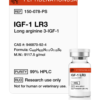

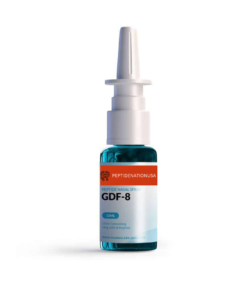



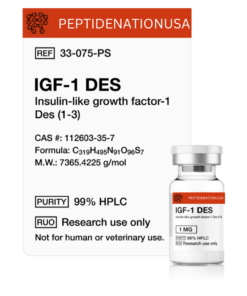

Kevin Daniels –
Incredible results over the 4-week cycle. More endurance, strength, and muscle fullness.
Amber Johnson –
Super clean and professionally packaged. Felt it working within days—love this batch.
Jonathan Price –
Been in the game a while—this is some of the best LR3 I’ve ever used.
Samantha Miller –
Works great pre-workout. Pumps are insane and I recover much quicker now.
Derrick Foster –
All 10 vials came in perfect condition. Potency is definitely there. Will order again.